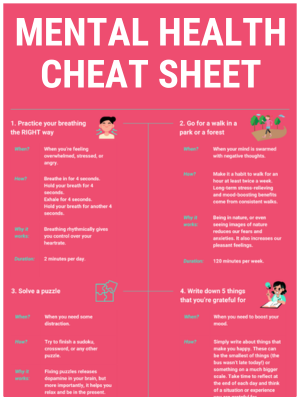How do you cope with daily stressors? And what about significant traumas? How we bounce back from challenging events dictates our resilience. While there is no set time scale to recover from adversity, the critical thing is that we do eventually recover.
If you feel like life keeps piling on you and you are trapped underneath, you need the skills to bounce back. Let’s not accumulate the weight of all the micro-traumas in our life. You don’t need to keep carrying the burden of significant life traumas.
In this article, I’ll discuss what it means to bounce back with 7 tips that you can put into practice today.
Contents
What does it mean to bounce back?
Before we can understand how we can bounce back from anything, we need to know what this means. To bounce back means “to return to your natural state or activities after having a problem.”
The ability to bounce back is synonymous with being resilient.
We all have low points in our lives and endure negative experiences. The ability to bounce back means that we can return to our normal levels of enthusiasm, motivation, and functioning before a negative situation floors us.
In essence, the skill of bouncing back is in our ability to recover, which helps us return to our normal state.
How do we learn to bounce back?
We start to develop our resilience in our childhood.
Interestingly, according to this article, several protective factors facilitate our ability to build resilience. These protective factors mean that not all children impacted by early adversity will experience ongoing hardship.
The article describes resilience as being like a seesaw. Protective factors counterbalance adversity.
A critical factor in childhood adversity is having at least one safe and consistent relationship with a parent or other adult. This factor is a significant commonality in children doing well when faced with adversity.
The article stresses that resilience “requires supportive relationships and skills-building opportunities.”
This research on resilience and child development bleeds into our later years and sets the foundation for our adult lives.
💡 By the way: Do you find it hard to be happy and in control of your life? It may not be your fault. To help you feel better, we’ve condensed the information of 100’s of articles into a 10-step mental health cheat sheet to help you be more in control. 👇
What are examples of bouncing back?
Life is full of twists and turns. We all experience daily obstacles as well as more significant traumatic events. Examples of this include:
- Death of a loved one.
- Illness.
- Accidents.
- Job loss.
- Natural disasters.
- Separation and divorce.
- Physical or mental abuse.
As outlined in this article, the ability to bounce back does not prevent adversity. But it equips us with the tools necessary to return to optimum health and well-being.
We all know people who have bounced back from an operation and regained their health. The ability to recover from such a setback is indicative of our ability to bounce back.
My poor neighbor’s wife passed away a few years ago. While initially he withered and recoiled from life, he has now bounced back remarkably well with intervention from friends and family. He is dating a lovely lady and the smile is back on his face.
When my brother was in the midst of his divorce he couldn’t see beyond his past.
He was in the depths of despair and rejection. Fast forward a few years, and his life is better than ever.
We can’t rewind time. Instead, we must learn to live with the cards we are dealt. When we learn to build resilience, we adapt to our circumstances and use our tools to find acceptance instead of engaging in a futile battle of resistance.
When we bounce back from adversity, we invite peace and harmony back into our lives.
7 ways to bounce back
Neuroscientists recognize that our ability to bounce back from difficult situations varies. When faced with similar stressors, some people are adept at bouncing back. In contrast, others endure more suffering and are less able to deal with these circumstances.
The good thing is we can train our brains to be more resilient! Here are 7 ways to help you bounce back from anything.
1. Deal with the small things
When we learn how to deal appropriately with the small things, we equip ourselves with the expertise to deal with more significant obstacles that may come our way.
Minor incidents can wreak havoc on our day. Think about the following inconveniences:
- Someone cuts in front of us while driving.
- Losing our keys.
- Running late.
- Forgetting an important date.
- Pet or child being sick and impacting our work.
- Power cut.
- Boiler breaks.
- The car breaks down.
Many things can turn our life topsy turvy in one day. But if we breathe deeply and accept the uncontrollable, we build our resilience.
When life throws you a curveball, ask yourself if there is anything you can do to fix it or change it. If there isn’t, we must learn acceptance—no dwelling, giving time to anger, or being sidetracked by frustration. We alter our course and do our best to deal with the obstacle.
Daily resilience arms us for all eventualities. If you want more tips on this topic, you may like our article about how not to let things bother you.
2. Meditate
When we train our muscles, we help build resilience in our brains. So exercising helps improve our ability to bounce back.
But equally, when we don’t work our muscles but focus on meditation instead, we can also build resilience.
A study specializing in monks shows that those who are regular meditators benefit from the physical changes meditation makes on the brain. Neuroscience has shown meditation changes how the brain looks and functions.
The more experienced the meditator, the less time is required for the brain to recover from a stressor. If you want a head start, here’s our article on why meditation is so important.
3. Avoid making comparisons
They say comparison is the thief of joy. Anyone with a social media account will testify to this.
Any sort of comparison is unhealthy. Comparing ourselves to different versions of ourselves is not conducive to recovery. I am a different person today from the person I was yesterday. Tomorrow I will be slightly different again.
When we honor our uniqueness and the person we are in the present moment, we find acceptance and love for all that we embody. We recognize our restrictions and avoid being consumed with distracting feelings of frustration, jealousy, or dissatisfaction.
Even if someone else’s situation seems comparable to ours, hundreds of other variables are at play. Avoid comparison at all costs; you are unique and bring a bespoke set of experiences and knowledge to your conundrum.
4. Catch your thoughts
Those who engage in mindfulness are better at catching their thoughts.
Our thoughts can kick us when we are down instead of lifting us up and giving us the reassurance and comfort we may need. Our thoughts can blindside us with intrusive ideas which are unwelcome and certainly not conducive to bouncing back.
Examples of unhelpful thoughts include:
- “Things will never improve.”
- “You are stuck like this forever.”
- “How you feel today is a permanent state.”
We need to control these types of thoughts. While the first step is to catch these thoughts, we must deal with them appropriately.
If you want to work on this more, check out our article on how to control negative thinking.
5. Build your community
Who we surround ourselves with has an enormous impact on our life. The motivational speaker Jim Rohn once said we are the sum of the 5 people we spend the most time with.
So make sure you choose your friends and broader tribe wisely. For those you allow into your inner circle, ensure they are compassionate and honest.
Consider joining special interest groups or sports groups, as this sense of community can alleviate loneliness and help you find a sense of purpose and belonging, which is vital to boosting your well-being.
During difficult times, beware of those who mean well but come out with cliches that can sometimes do more harm than good. Toxic positivity can be subtle and leaves us feeling muddled and unseen.
The following comments may be a sign of toxic positivity:
- “Just decide to be happier!”
- “Everything happens for a reason.”
- “Look for the silver lining.”
- “Just think, it could be worse.”
These comments are invalidating and can induce feelings of shame and guilt. If you want more details, here’s our article on how to deal with toxic positivity.
6. Embrace learning opportunities
Resilience is closely tied to our ability to learn from experiences, especially difficult ones. When facing a setback, ask yourself what lessons can be learned.
This mindset shift transforms challenges into opportunities for personal growth. For instance, if you’ve faced a professional failure, consider what skills or knowledge you can gain from the experience to avoid similar situations in the future or to handle them more effectively.
Encourage yourself to reflect on both the situation and your reactions to it. Identify any patterns in your thinking or behavior that may not be serving you well. By embracing a learning mindset, you’ll not only recover from current challenges but also build skills and insights that make you more resilient in the future.
7. Cultivate self-compassion
Self-compassion is a critical component of resilience. It involves treating yourself with the same kindness and understanding you’d offer a good friend in a tough situation.
Begin by recognizing and accepting your emotions without judgment. Allow yourself to feel sad, frustrated, or disappointed, understanding that these feelings are a normal part of the human experience.
Next, engage in positive self-talk. Instead of being critical or harsh, remind yourself that everyone faces setbacks and that they don’t define your worth or capabilities. Engage in activities that promote self-care and relaxation, such as taking a walk, reading a book, or practicing yoga. By fostering a compassionate relationship with yourself, you’ll find it easier to bounce back from life’s challenges.
💡 By the way: If you want to start feeling better and more productive, I’ve condensed the information of 100’s of our articles into a 10-step mental health cheat sheet here. 👇
This Cheat Sheet Will Help You Be Happier and More Productive
Thrive under stress and crush your goals with these 10 unique tips for your mental health.
Wrapping up
Life is messy and chaotic, and it rarely goes to plan. Sometimes, this can leave us feeling buried under the enormity of it all. But when we learn resilience and equip ourselves with the tools to bounce back from adversity, we increase our opportunities for health and happiness.
What’s your story of resilience and bouncing back from adversity? Or what’s your favorite tip to build your resilience? I’d love to hear from you in the comments below!



